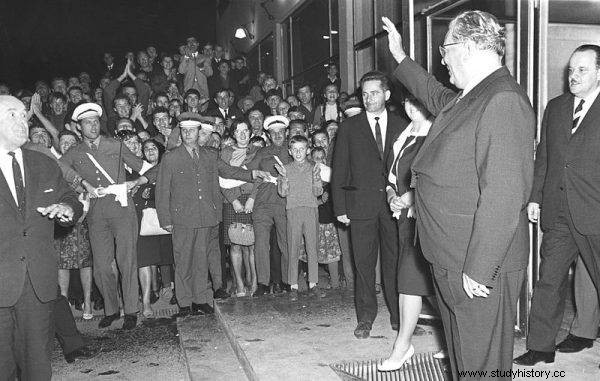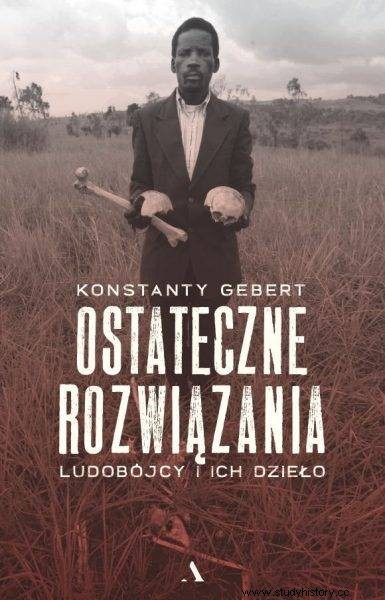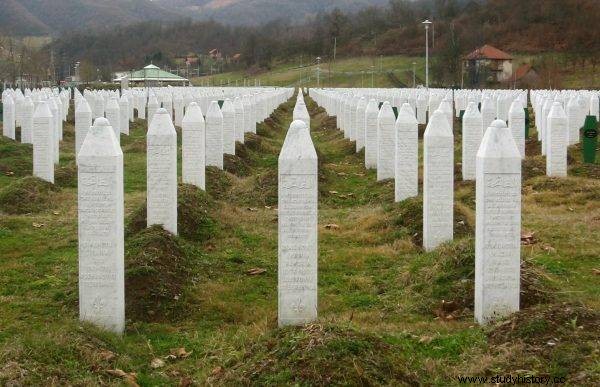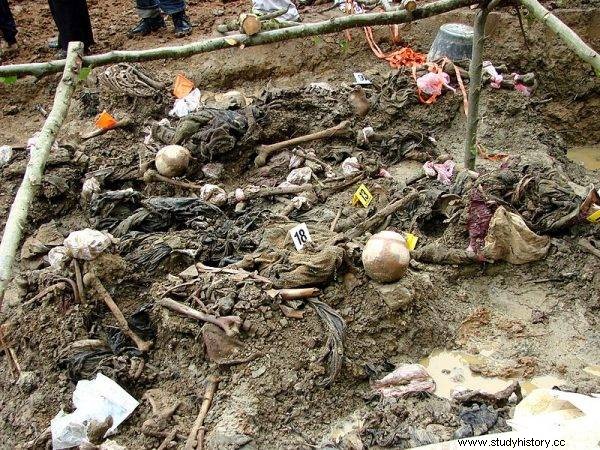To this day, this monstrous crime is the greatest genocide in Europe since World War II. What exactly happened on July 12, 1995 in Srebrenica?
The beginning of the 1990s was a period of great systemic changes related to the fall of communism. The countries of Central and Eastern Europe began to transform into democracies. Most of them passed these processes relatively peacefully. Things were different in Yugoslavia. One of the greatest crimes since World War II took place there.
The Socialist Federation of the Republic of Yugoslavia was an extremely diverse state - both nationally and religiously. Conflicts and a difficult history have marked this cultural melting pot for centuries. But as long as Josip Broz Tito was alive, the feuding nations were kept in check . With his death in 1980, the process of changing the mindset of the people of Yugoslavia began. It led to the tragic split of the country. In 1991, the Croatians, Slovenes and Macedonians declared independence. A year later, the Bosnians followed their example. These decisions did not appeal to the Serbs who wanted to preserve vast territories within the Federal Republic of Yugoslavia. Armed conflicts were inevitable.
The shortest of them turned out to be the Ten-Day War against the Slovenes and ended with their victory. To this day, it is considered one of the least bloody in Europe. The same cannot be said of the events in Croatia and in Bosnia and Herzegovina. Fighting broke out there after the declaration of independence. In both cases, these were extremely bloody conflicts. In Bosnia, things took a particularly tragic turn. There was the first genocide in Europe since 1945.
Wagging neighbors
Muslims accounted for over 40% of the population of the Republic of Bosnia and Herzegovina. There were over 30% of Orthodox Serbs in the country, and 17% of Catholic Croats. Unfortunately, the areas they inhabited did not have clear boundaries. As a result, the rights to the scattered lands were claimed by everyone. In addition, the conflict was not only territorial, but also national and religious.

As long as Josip Broz Tito lived, feuding nations were kept in check.
It is also worth mentioning that the parties were not equal in terms of the armed forces. After the breakup of Yugoslavia, the greater part of the military equipment fell to the Serbs . The embargo on arms imports imposed by the United Nations in September 1991 it only worsened the situation of Croats and Bosnians. In addition, there were extremely nationalistic moods. It was enough for the aggression between the three nations to break out with tremendous force.
Hidden resentments and prejudices for years have become a machine fueling acts of violence, both against soldiers and civilians. The purges have begun. Part of the local Muslim population was displaced and sent to camps with inhuman conditions. The rest of the civilians were simply murdered , of which Srebrenica became the most famous example.
Why Srebrenica?
In response to the persecution, the UN Security Council issued Resolution 743, establishing the United Nations Protection Force (UNPROFOR) , i.e. blue helmets. These were peacekeepers to protect the Bosniaks. In reality, however, they were unable to counteract aggression because of too light weapons and the limitation of a bureaucratic decision-making system.
Further acts of violence and the destruction of Muslim enclaves led to the issuance of Resolution 819 in April 1993. Based on this resolution in six cities (including Srebrenica) in Bosnia and Herzegovina, "safety zones" were created under the care of UNPROFOR. They were supposed to be sanctuaries for refugees fleeing the turmoil of war. As the events in Srebrenica showed, they turned out to be the scene of the slaughter that took place under the nose of the United Nations. The care of the city was entrusted to Dutchbat, the Dutch branch of UNPROFOR under the command of Col. Thom Karremans. It was about 400 lightly armed soldiers deployed in Potočari, 5 kilometers away.

The text was created, among others based on the book by Konstanty Gebert “Final Solutions. Genocides and their work ”, Agora Publishing House, 2022.
The announcement of Resolution 819 resulted in an influx of Bosnian Muslims to Srebrenica fleeing the purges. Behind them came Serbian soldiers who started the siege of the city . The official reason was that there are Bosnian militias raiding nearby Serbian villages. The attackers were not too far from the truth. Both sides responded with aggression to the aggression. In addition, despite the obligation to disarm the inhabitants of the zones by UN forces, the Bosnians managed to keep some weapons for their own defense and retaliation. Ultimately, however, the better equipped soldiers led by Serb General Ratko Mladic led to events that shocked Europe and the world.
Operation Krivaja 95
The Serbs decided to get rid of the Bosniaks in Srebrenica in the first place by cutting them off from humanitarian aid and food. To this end, they took control of all surrounding roads. The zone was besieged by approx. 4,500 soldiers . It was obvious that the 400 Karremans soldiers had no chance of defense themselves and civilians. The city soon ran out of basic supplies. Its inhabitants were threatened with starvation. Those who decided to look for food outside the zone were faced with death at the hands of the Serbs. But the worst was yet to come.

In July 1995, the Serbs launched Operation Krivaja 95, which was to lead to the fall of Srebrenica
In July 1995 the Serbs launched Operation Krivaja 95, which was to lead to the fall of Srebrenica. Mladic's troops did not have to bother too much, as the Dutch were left practically without support. They were unable to fend off the attack. There was indeed a shadow of hope in the form of air raids by UN troops. However, it was quickly destroyed when the Dutch soldiers were captured by the Serbs.
By the time Srebrenica finally collapsed, 20,000 people had left it in search of rescue at the UNPROFOR base in Potočari. About 5,000 refugees were admitted to the military area. The rest camped behind the fence in anticipation of the arrival of enemy troops. On the evening of July 11, Col. Karremans held talks with General Mladic. Armed operations were suspended and Serbs were to ensure the safe evacuation of civilians by the Bosnians from the zone. Unfortunately, these were promises made to the wind.
Men and boys stay…
On July 12, Ratko notified Muslims that women and children would be separated from boys and men aged 15–77. Interestingly, for many teenagers, the ticket to leave Srebrenica was growth . Witnesses talk about a rope slung between two trees at a height of 160 cm. The boys under it were allowed to leave the zone. The rest were stopped. Reason? Before they are released, they must undergo interrogation and prove that they were not active in Bosnian militias.
During the next several dozen hours bus convoys with women and children started from Srebrenica . The journey to safety turned out to be a road through hell for many . Vehicles were stopped and women were robbed, raped and transported through areas where Bosnian men were executed. They became forced witnesses of their death and desecration of their bodies.

Officially, there are about 8,000 victims of the Srebrenica massacre
Some Muslims tried to flee with convoys by hiding in buses. If they were discovered, they would be shot in front of the other passengers. Still, it was worth the risk. Those who remained in Srebrenica were mostly brutally murdered . Shooting, throat slits, guts pulled out - General Mladic's soldiers knew no mercy. They killed both men and boys. The executions lasted from morning to evening. Witnesses to these events later recalled vast pools of blood that did not dry in the hot July sun.
The purges were not limited to Srebrenica. At the news of the slaughter, many Bosnians tried to flee. Unfortunately, few have succeeded. Captured ones were killed on the spot; rarely without prior mistreatment . It is estimated that in just 4 days (until July 16), more than 7,000 people were murdered . The Bosnian genocide near Srebrenica continued for weeks. Many of the crimes were recorded on videotapes, which were later used as evidence against those accused of the massacre. But has justice been done?
In search of the guilty and redemption
The events in Srebrenica moved public opinion. Their cruelty and the inaction of UN troops contributed, inter alia, to until Tadeusz Mazowiecki resigned from the function of the UN special envoy, which he held from 1991. In his report on his observations in Bosnia and Herzegovina, he officially wrote about violations of human rights by all parties to the conflict.

Exhumation of the mass grave of the victims of the Srebrenica massacre
The Srebrenica massacre and the Markali massacre in August of the same year ultimately influenced the decision to enter the conflict by NATO troops. December 14, 1995 (5 months after conquering the city) the presidents of Bosnia and Herzegovina, Croatia and Serbia signed the Dayton Agreement ending two of the bloodiest conflicts in Europe since 1945. Officially, there are about 8,000 victims of the Srebrenica events. We will probably never know the true number of those murdered, as many Bosnians remain missing to this day.
Ratko Mladic, Radovan Karadžić and Slobodan Miloševic were accused of the crime. The first two were sentenced. Milošević died of a heart attack in a Hague prison, but his involvement in the genocide could not be officially confirmed. The UN was also blamed for the massacres. The organization was accused of inactivity, poor preparation and a slow and bureaucratic decision-making system. More than once, soldiers of the blue helmets have been seen looking away from the rapes and murders taking place next to them . Colonel Karremans himself, by handing over the Muslims from Srebrenica to the Serbs, was to tell the military physician that "nothing good awaits these people." Of course, he denied this in official reports.
To this day, Srebrenica remains another warning against what can lead to human indifference. This, as well as other great crimes, is told in the book "Final Solutions. Genocides and their work ”, Agora Publishing House, 2022.

Bibliography
- Konstanty Gebert, Final solutions. Genocides and their work , Agora Publishing House, 2022.
- Tochman Wojciech, As if you were eating a stone , Wydawnictwo Literackie, 2018.
- Suljagić Emir, Postcards from the grave , Black, 2007.
- Demick Barbara, Under siege. Life under fire on Sarajevo Street , Black, 2019.
- Kaczorowski Aleksander, They wouldn't even hurt a fly. War criminals before the Hague Tribunal, Drakulić, Slavenka , Wybcza.pl (accessed:February 13, 2022).
